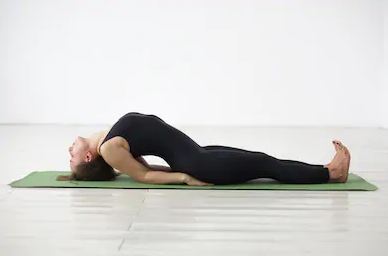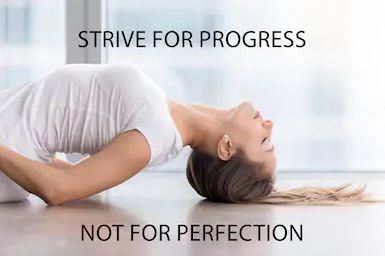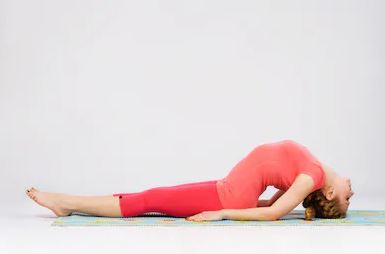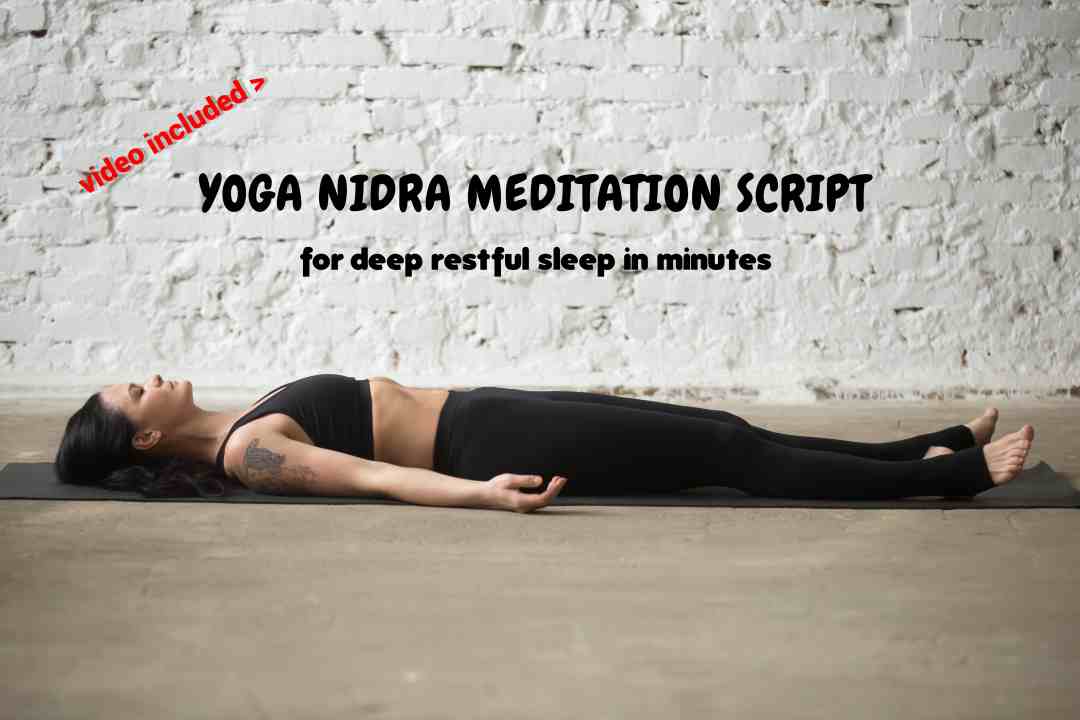The Sanskrit word ‘Matsya’ means ‘fish’ thus, known as Matsyasana or the Fish Pose. Matsayasana Posture in Yoga is carried out in the water, allows the body to float easily like that of a fish.
According to Hindu mythology, Matsya was the incarnation of Lord Vishnu who appeared to save the sages and maintain a balance between the earth and the sea. It has been labelled as the “Destroyer of all Diseases”. Thus, the Matsyasana or Fish Pose restores spinal strength and overall body balance.
Matsyasana or Fish Pose (Asana) should be practised right after performing the Shoulder Stand. It relieves congestion and cramps which can be caused by the Shoulder stand.
How to do the Fish Pose (Matsyasana)
How to do the Plow Pose (Halasana) and it’s Benefits
Step 1
Lie flat on your back and bring your legs and feet together. Keep the knees straight and place both the arms under your body. Your hands should be as far under your thighs as possible. make sure your palms are facing down. Keep your elbows as much as possible under your back. The position aims to bring your shoulders further back.
Step 2
Bend the elbows and push them on the floor below. Keep your weight on your elbow and use them to lift your chest off the floor so that you are sitting up halfway. Drop your head slowly backwards so that the top of the head is touching the floor, however, the weight is distributed on the elbow.
Make sure, your mouth is closed while doing this exercise – to enable the neck and chest to get a nice stretch. If you are a beginner stay in this position and hold it for at least 15 seconds, half the time recommended for the shoulderstand.
Step 3
Keep your face, legs and feet without any tension – completely relaxed. To balance yourself try and distribute your body weight on your buttocks and elbows. The idea is to arch the chest as high as you can. Since the chest is open wide make use of the pose by inhaling deeply. Take natural breaths. Over a period of time comfortable to you hold your breath for 1 1/2 minutes approximately (if you can).
How to come out of this position?
- To come out of the Fish Pose lift your head gradually while you lower your back to the floor.
- Once you are lying down relax in a Corpse Pose.
- Roll your head either side slowly so that you make the muscles loose and then bring it back to the centre.
Neck Stretch after the Pose

There could be tension in your neck area after doing the Fish Pose, therefore to release it follow these steps:
Step 1:
Hold your head by interlocking your fingers behind your head while you are lying on the floor face up. Bring your elbows pointed towards the sky or ceiling and fore-arms next to your ears.
Step 2:
Inhale and lift your head with the help of the fingers behind your head and push your chin into top of your chest.
Step 3:
While you exhale lower your head back onto the floor or mat. repeat these steps twice. Relax into a corpse pose for 1-2 minutes.
Paulo Coelho Quotes Inspirational
Benefits of Matsyasana or Fish Pose

Physical Benefits:
- Aids in relieving and toning the nerves in your back and neck area.
- Eases away any stiffness in your shoulders and back. Moreover, it increases the blood flow in this area.
- Gives extra strength to muscles in shoulders and arms.
- Increases the capacity of lungs by expanding the rib cage so that you can breathe deeply. Additionally, it relieves asthma and helps decongestion of lungs.
- Both the Fish Pose and Shoulder Stand help in better function of the thyroid and parathyroid glands.
- It relieves the cramped cervical area or stiff neck caused by Shoulder Stand or Sarvangasana.
- It sends a good amount of blood to the upper dorsal and crevicular nerves and they get toned and nourished.
- Due to the head tilting backwards the pineal, pituitary and endocrine glands get toned and rejuvenated.
- Since the abdominal muscles get pulled while doing the Fish Pose it massages the organs in it and removes constipation.
Mental Benefits:
Due to the widening of the ribs, your solar plexus opens up and gets recharged. As a result, it reduces pressure on the abdomen. Mainly, matsyasana or fish pose helps in reducing depression.
Common Mistakes
- The body is not straight.
- Buttocks lifting off hands.
- Applying too much weight on the head.
- Overarching the lower back.
- Disconnecting your head from the floor
- Knees bent.
- Never do Pranayama in the Matsyasana or Fish Pose. The breathing has to be smooth and silent.
Who should avoid practising Matsyasana or Fish Pose?

- If you suffer from high or low blood pressure, you should refrain from doing the Matsayasana or Fish Pose.
- If you have a serious back or neck injury, it is strongly recommended to avoid this pose or asana.
- Patients with insomnia and migraine should abstain from practising the Matsayasna or Fish Pose.
Take Away
For those of you who complain of shoulder and neck pain or stiffness – Matsyasana or Fish Pose is just the answer for you. Also, this simple Yoga Pose strengthens the arm muscles and increases lung capacity. With so many benefits up its sleeve – Matsyasna is certainly to be added to your daily Yoga routine. Try doing it in the steps described above and tell us what difference do you feel in your body after 10 days! I am sure you will find Matsyasna or Fish Pose magical.
Related Articles:
How to do the Headstand? What are the benefits of Sirsasana?
Step by Step Guide of How to do Mindfulness Meditation?
How to Build Awareness on Listening Mindfully Every day
Best time to do Sirsasana – can we do a headstand in the Evening?
Yoga Poses proven to Cure Knee Pain
Do’s and Don’ts of Yoga during Pregnancy
Why is Surya Namaskar or Sun salutation the King of Yoga Poses
Fix bad Posture at Work – by these Super Simple Methods
How to bring Neck and Shoulder Pain Relief – Stretch, Exercises and Yoga








